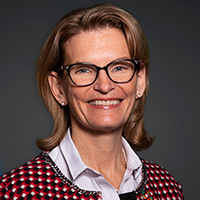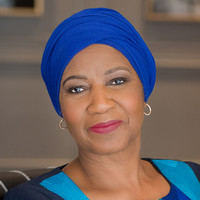Digital technologies are one of the core enablers of a new social contract. However, access and accessibility to ICTs is not a guarantee. The gender gap in global Internet usage is one stark example of how digital divides reflect and amplify existing social, cultural and economic inequalities.
The 2030 Agenda for Sustainable Development clearly states the importance of addressing the needs of these groups. SDG 5 itself seeks to “achieve gender equality and empower all women and girls” and SDG 10 aims to “reduce inequality within and among countries”. Inclusion is in itself a goal, but also a powerful enabler, and leaving no one behind in the digital world means ensuring that technology is people centered.
- In order to achieve true and meaningful universal connectivity, appropriate policies, strategies and actions must be developed to address the specific needs for the digital inclusion of women and girls, youth, children, persons with disabilities, the older persons, indigenous peoples, and people living in remote areas.
- Data is vital to effective decision making – especially when seeking to address the needs of specific target groups.
- There is an urban-rural divide in access and use of ICTs. Globally, 95% of people living in urban areas have access to a 4G network, but only 71% in rural areas.
- In addition to the urban-rural divide, there is also an access vs usage divide, which highlights the need to consider other factors such as: affordability, skills, content, and level of education.
- Globally, in places where connectivity is available and affordable, Internet usage among 15-24 years old is almost 70%.
- In developed countries, the gender gap in Internet usage has almost disappeared, but in developing countries it is still substantial, even more so in LDCs.
- Globally, 2 in 3 children and young people do not have fixed broadband access at home to continue their education.
- Investments in digital infrastructure must seek to always create a human interaction and ensure there are not unfair disparities.
- Innovation and Inclusion must be at the core of every effort to accelerate connectivity…not for persons with disabilities, but WITH persons with disabilities.
- Technology, innovation, and digital inclusion are central to all age groups. They ensure a pathway for equal participation in the economy and society.
- Diversity and the involvement of several stakeholders in the way technologies are created is critical for Universal Design.
- Accessibility is a three-fold challenge: accessibility to the technology, affordability, and the usability of devices and applications.
- ICTs must be inclusive and designed to work for the people they are intending to serve and not the other way round. They are also a “social good”, and as such, they must be built in accordance to the principles of respecting nature, the environment, and the cultural heritage of the communities that will use it.
Go to the event page
































